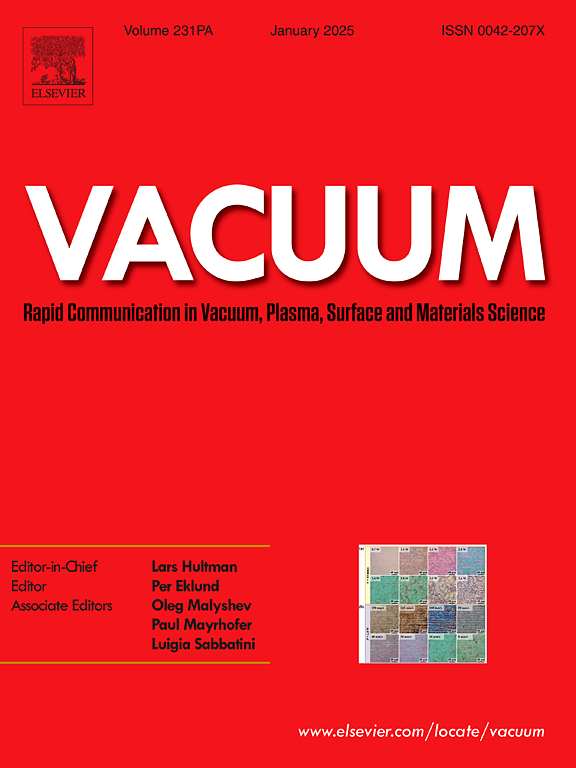Elucidating the phase change memory properties of (GeTe)1-x(GeSe2)x (0 ≤ x ≤ 0.21) films
IF 3.9
2区 材料科学
Q2 MATERIALS SCIENCE, MULTIDISCIPLINARY
引用次数: 0
Abstract
GeSe2-doped GeTe phase change memory alloys are considered for high-temperature applications. Films of compositions (GeTe)1-x(GeSe2)x (x = 0, 0.07, 0.14, 0.21) showed an increase in the crystallization temperature (Tc) from 170 °C to 258 °C after doping with GeSe2, which is caused by an improvement in the activation energy. Incorporation of GeSe2 increases the amorphous as well as crystalline resistances, resulting in the decrease in threshold current (Ith) from 0.9 mA to 0.4 mA. The 10 years of data retention temperature have been increased from 96 °C to 128 °C with a corresponding increase in the activation energy from 2.43 eV to 2.73 eV. The amorphous phase crystallized to a rhombohedral structure with no phase separation, and the crystallite size decreases with the increase in the GeSe2 concentration. X-ray photoelectron spectroscopy (XPS) confirmed the presence of stronger Ge-Se bonds, which increase the localization of charge carriers, resulting in the increase in optical band gap. Increased thermal stability (high Tc), high electrical resistance contrast between the amorphous and crystalline states, high crystalline resistance, and single-phase GeTe are characteristics of phase change memory (PCM) material for high-temperature applications.
阐明了(GeTe)1-x(GeSe2)x(0≤x≤0.21)薄膜的相变记忆特性
掺gese2的GeTe相变记忆合金被考虑用于高温应用。GeSe2掺杂后,组合物(GeTe)1-x(GeSe2)x (x = 0,0.07, 0.14, 0.21)的结晶温度(Tc)由170℃提高到258℃,这是由于活化能的提高所致。GeSe2的加入增加了非晶电阻和结晶电阻,导致阈值电流(Ith)从0.9 mA降低到0.4 mA。10年数据保存温度由96℃提高到128℃,活化能由2.43 eV提高到2.73 eV。随着GeSe2浓度的增加,非晶相结晶成无相分离的菱形结构,晶粒尺寸减小。x射线光电子能谱(XPS)证实了更强的Ge-Se键的存在,这增加了载流子的局域化,导致光学带隙增大。增加的热稳定性(高Tc),非晶和晶态之间的高电阻对比,高晶体电阻和单相GeTe是相变记忆(PCM)材料用于高温应用的特性。
本文章由计算机程序翻译,如有差异,请以英文原文为准。
求助全文
约1分钟内获得全文
求助全文
来源期刊

Vacuum
工程技术-材料科学:综合
CiteScore
6.80
自引率
17.50%
发文量
0
审稿时长
34 days
期刊介绍:
Vacuum is an international rapid publications journal with a focus on short communication. All papers are peer-reviewed, with the review process for short communication geared towards very fast turnaround times. The journal also published full research papers, thematic issues and selected papers from leading conferences.
A report in Vacuum should represent a major advance in an area that involves a controlled environment at pressures of one atmosphere or below.
The scope of the journal includes:
1. Vacuum; original developments in vacuum pumping and instrumentation, vacuum measurement, vacuum gas dynamics, gas-surface interactions, surface treatment for UHV applications and low outgassing, vacuum melting, sintering, and vacuum metrology. Technology and solutions for large-scale facilities (e.g., particle accelerators and fusion devices). New instrumentation ( e.g., detectors and electron microscopes).
2. Plasma science; advances in PVD, CVD, plasma-assisted CVD, ion sources, deposition processes and analysis.
3. Surface science; surface engineering, surface chemistry, surface analysis, crystal growth, ion-surface interactions and etching, nanometer-scale processing, surface modification.
4. Materials science; novel functional or structural materials. Metals, ceramics, and polymers. Experiments, simulations, and modelling for understanding structure-property relationships. Thin films and coatings. Nanostructures and ion implantation.
 求助内容:
求助内容: 应助结果提醒方式:
应助结果提醒方式:


